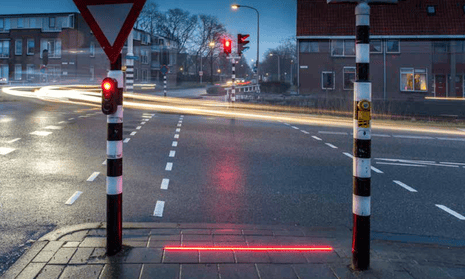In the future, you won’t even have to look up from your phone to cross the road.
The Dutch municipality of Bodegraven-Reeuwijk is testing a new system for traffic lights which embeds a thin strip of LEDs on the pavement before busy road crossings, to signal to inattentive smartphone users whether or not it’s safe to step out.
The project, called “+ Light Line”, is being implemented by Dutch firm HIG Traffic Systems. They switch between red and green when it’s safe to cross, blinking alongside the main signals as the lights are about to turn.
This article includes content hosted on video.ad.nl. We ask for your permission before anything is loaded, as the provider may be using cookies and other technologies. To view this content, click 'Allow and continue'.
Kees Oskam, a councillor in the municipality, said that people were increasingly distracted by “social media, games, WhatsApp and music”, at the expense of paying attention to traffic. “We can’t easily reverse this trend, but we want to anticipate it.”
HIG’s Mark Hofman told Dutch news site OmroepWest: “Smartphone use by pedestrians and cyclists is a major problem. Trams in The Hague regularly make an emergency stop because someone looks at their smartphone instead of traffic.”
The current test strips are installed at an intersection near several schools, but HIG hopes to roll it out more widely if the scheme’s a success.
